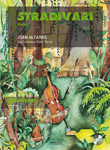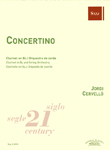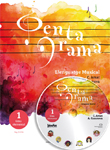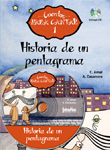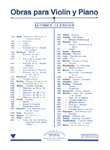Home / Works / Winterreise (Viaje de invierno) Opus 89 (D 911
Delivery in 24h-72h (Peninsula work days)
Winterreise (Viaje de invierno) Opus 89 (D 911
Transcripción para voz y guitarra
Voz y Guitarra
SCHUBERT, FranzReg.: B.3863
31,40 €
P.V.P. (VAT included 4%)
Add to cart
- Arrangement: TORRENT, Jaume
- Ensemble: Duos: With voice.
- Genres: Classical / contemporary: Arrangements and Transcripts; Choir.
- Lyric author: MÜLLER, Wilhelm
- Language: Alemán
- Language of the comment: Spanish, German, English
- Product format: Partitura + particellas
- Difficulty level: Advanced-superior
- Period: 2nd half S. XX - XXI
- Publishing house: Editorial Boileau
- No. of pages: 108
- Measure: 31,00 x 23,00 cm
- ISBN: 978-84-17199-27-2
- ISMN: 979-0-3503-4011-6
- Available in digital: No
- Available for rent: No
The transcription work of the songs that make up of the cicles Die schöne Müllerin (20 songs) and Winterreise (24 songs) of Franz Schubert are based on two ideas that have always seemed unavoidable to me: on one hand to be faithful to the musical proposition of Schubert and, on the other hand, to achieve a functional guitaristic transcription.
In order to adjust the polyphony to the possibilities of the guitar, I often found myself forced to suppress some notes from the chords. In these cases, I always followed the criterion of respecting the most significant notes of each harmony to preserve its solidity, colour and tonal function. The most frequent suppressions were the reinforcing octaves and occasionally some sixths or sevenths. In some points I had to modify the bass form or the design of some arpegios and in those «lieder» in which the pianistic notation clearly exceeded the possibility of the guitar (for example in the songs «Die böse Farbe» of Die schöne Müllerin or «Erstarrung» of Winterreise), I substituted certain textures with others that were possible for the guitar and which were as close as possible to the Schubertian ones in both design
and musical result. Likewise I avoided technical resources of a folk character (especially certain types of «rasgueados»), which are so frequent in guitar notation, but are completely alien to the
aesthetic of this music.
This transcription provides the possibility to perform all the songs of both cycles in their original tonalities. Given that some are not very favourable to the polyphonic expression of the guitar, I opted to transport them into guitaristic tonalities and from
these recuperate the original tonalities through the use of a capotasto [Ct]. There is no case where I chose to modify the conventional tuning of the guitar (E, B, G, D, A, E) since the time needed to make such a modification between songs would interrupt the atmosphere of continuity required for the complete interpretation of the cycle. Additionally, given that the affected string or strings tend to alter their tension after the start of a new song, it would be out of tune after just a few bars.
The dynamics reflected in the score are the same as those in the original. I believe that given the similarity in sound between the guitar and the Schubert’s fortepiano, the dynamics of the guitar may be used as a faithful reference point, taking into account that the better the guitar technique the better the margin of intensity will be between the pp and the ff and, therefore, the richer the intermediate nuances will be.
Finally I wish to add that I have aimed at achieving a completely operational version for the guitar. To do so I employed my extensive experience as a concert guitarist. Said experience provided me with the ability to distinguish the efficiencies of different patterns of guitar techniques in function of the musical parameters to which they coincide. Although the level of difficulty of the songs can only be approached by those of a highly developed technique, all the guitar passages were considered to obtain an execution which respects the parameters of speed, ductility, sound intensity and agogic that are demanded by a performance of the highest artistic level.
Jaume Torrent
March 2018, Barcelona
1. Gute Nacht (Buenas noches / Good Night)
2. Die Wetterfahne (La veleta / The Weathervane)
3. Gefrorne Tränen (Lágrimas heladas / Frozen Tears)
4. Erstarrung (Entumecimiento / Numbness)
5. Der Lindenbaum (El tilo / The Linden Tree)
6. Wasserflut (Torrente / Flood Water)
7. Auf dem Flusse (En el arroyo / On the River)
8. Rückblick (Mirada atrás / A Look Backward)
9. Irrlicht (Fuego fatuo / Will o' the Wisp)
10. Rast (Descanso / Rest)
11. Frühlingstraum (Sueño de primavera / Dream of Spring)
12. Einsamkeit (Soledad / Solitude)
13. Die Post (El correo / The Post)
14. Der greise Kopf (La cabeza cana / The Old-Man's Head)
15. Die Krähe (La corneja / The Crow)
16. Letzte Hoffnung (Última esperanza / Last Hope)
17. Im Dorfe (En el pueblo / In the Village)
18. Der stürmische Morgen (Mañana tormentosa / The Stormy Morning)
19. Täuschung (Engaño / Illusion)
20. Der Wegweiser (El poste / The Sign Post)
21. Das Wirtshaus (La posada / The Inn)
22. Mut (Valor / Courage)
23. Die Nebensonnen (El parhelio / The False Suns)
24. Der Leiermann (El organillero / The Hurdy-Gurdy Man)

